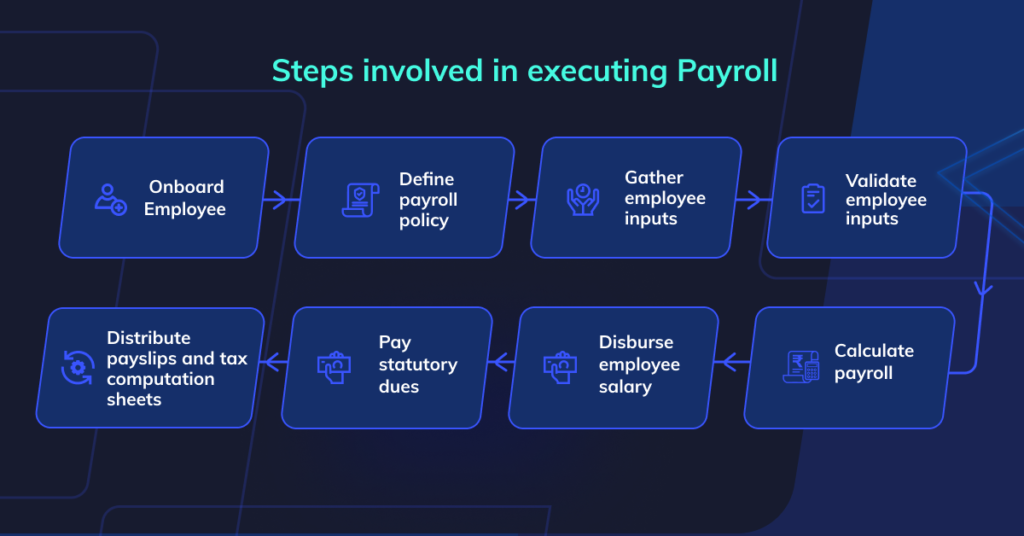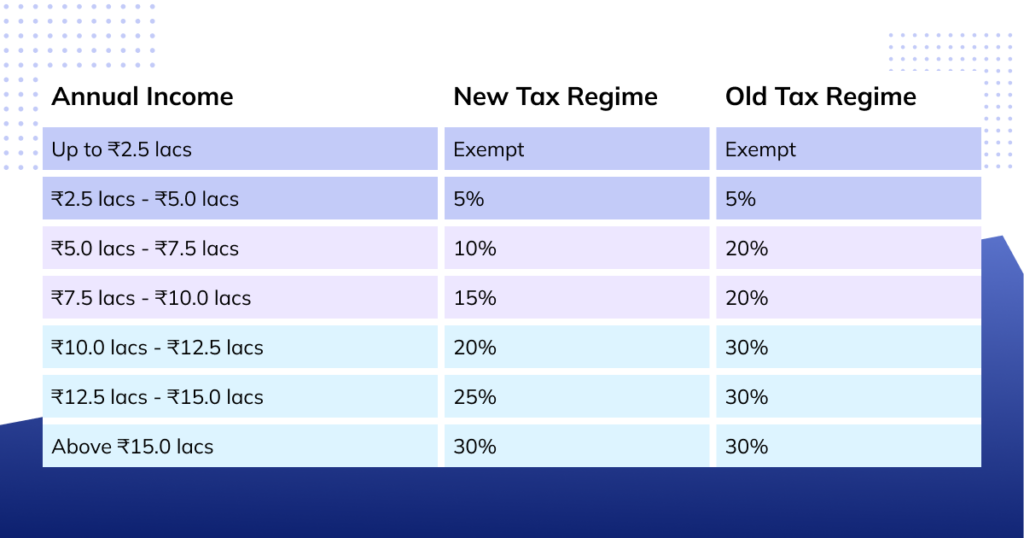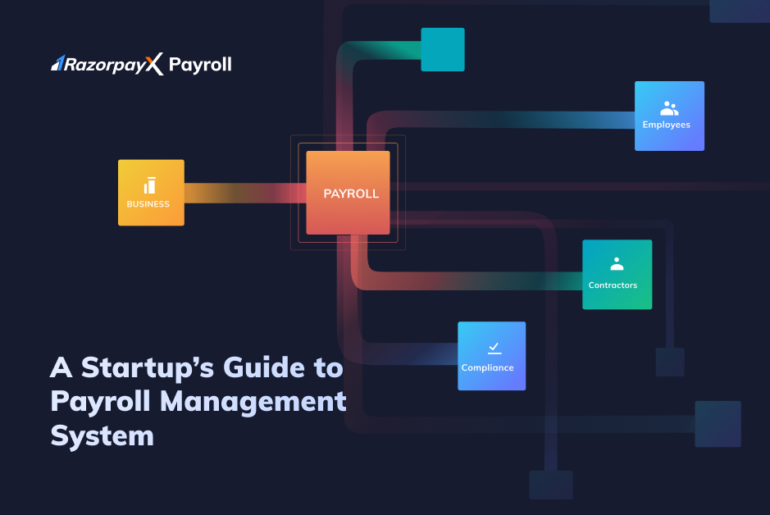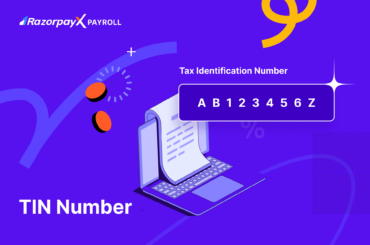Table of Contents
What is Payroll Management?
A payroll management system is a special kind of software that automates the process of disbursing employee salaries. A good payroll management system will help businesses save valuable time, resources and money by using automation and technology to simplify tasks.
The process of payroll management includes onboarding employees, calculating salaries, tax deductions like EPF, PT, TDS and ESI, adding benefits and finally paying the salaries on time and accurately. Payroll management software like RazorpayX Payroll can help your business automate this entire process.
Take a free demo and experience RazorpayX Payroll in action.
Stages in Payroll Processing
Payroll processing involves careful planning and consists of many activities. Below is an overview of all the steps involved in payroll processing.
 1. Employee onboarding
1. Employee onboarding
It is the process of introducing new hires to the company, setting up their accounts, getting documents such as PAN, Aadhaar card. If you are doing payroll for the first time, you need to prepare a list of all the employees in the company and subsequently keep adding new hires to it.
When you are just starting up, creating this list is easy, but it gets challenging as your business scales. This is where intelligent payroll software helps. It has features like employee self-service that makes the employee data collection process a breeze.
2. Defining payroll policies
This step involves defining payroll policy for your business. You need to factor in pay policy i.e., the net amount to be paid to different employees based on their role and position, divide the salary structure based on the benefits you are offering such as flexible benefits, HRA (house rent allowance) etc. You also need to define your leave and attendance policy.
Pro tip: Using payroll software, you can do all these things in one place, without any paperwork involved. In fact, it automatically divides the salary into all the components once you input the number.
3. Gathering inputs
Usually, you gather employee inputs such as PAN, bank account details during the employee onboarding process. Other data inputs required for payroll processing include leave and attendance data of employees, income tax declaration, eligibility for various benefits, shift timings, comp offs, and reimbursements claimed. The finance and HR team collaborate to get this data in small organisations.
Pro tip: Smart payroll software allow you to handle all this in one place quickly and even let employees make tax declarations. Since there are two tax regimes in India, the software should support both the old and new tax regime.
4. Validating inputs
After gathering the inputs mentioned in the previous step, you need to validate them so that everything is as per the company policy. Also, check if all the active employees are included in the record before payroll execution and inactive employees are deleted.
5. Calculating payroll
This is the process of doing actual payroll calculations. Arriving at the “net pay or gross salary” for all the employees after doing necessary deductions and taxes. Calculating payroll using spreadsheets or manual methods is complicated. A missing zero or an additional one can result in heavy payroll errors. This has several repercussions from incorrect salary payment, incorrect tax filings, and ultimately employee distrust.
Recommended Read: Signs That Your Business Needs Payroll Software
6. Disbursing employee salaries
After doing all the payroll calculations, you need to ensure there are sufficient funds in your business bank account to transfer salary to employee salary accounts. Then, a salary bank statement is sent to the respective branch. This statement contains details like employee name, employee ID, salary, etc. All this hassle can be avoided if you have payroll software. All it takes is just 3 clicks to execute payroll through RazorpayX Payroll software.
7. Paying statutory compliances
There are statutory deductions that businesses need to calculate such as TDS (Tax Deducted at Source), PF (Provident Fund), ESI (Employee State Insurance) in payroll execution. These amounts are calculated and then filed at appropriate government portals. If you do not pay these on the due dates, your business could face legal penalties.
That’s why it is necessary to consider all such deductions while computing salaries. Income tax is one such deduction. At the beginning of the year, employees are asked to declare their taxes and choose one tax regime from below.
 Based on the above tax slabs, you calculate the monthly tax liabilities of employees. Read more in our blog ‘How to calculate income tax on salary with examples.’
Based on the above tax slabs, you calculate the monthly tax liabilities of employees. Read more in our blog ‘How to calculate income tax on salary with examples.’
8. Distributing payslips to employees
The last step of the process is to share payslips with employees. This is mandated by legal laws in India. With payroll software, you don’t need to send payslips to individual employees over emails. They can access it for any month at any time from the employee self-service portal.
Challenges in Payroll Management
Payroll management is a complex and time-consuming task, and there are a number of challenges that payroll administrators can face. Some of the most common challenges in payroll management include:
- Compliance with employment law and tax legislation: Payroll administrators must be familiar with and comply with all applicable employment laws and tax regulations. This can be challenging, as these laws and regulations can be complex and change frequently.
- Data accuracy: Payroll administrators must ensure that all employee data is accurate and up-to-date. This includes information such as employee hours worked, pay rates, and tax deductions. Even a small error in data entry can lead to incorrect paychecks for employees.
- Timeliness: Payroll must be processed accurately and on time each pay period. This can be challenging, especially for large companies with a complex payroll system.
- Security: Payroll data is highly sensitive, and payroll administrators must take steps to protect it from unauthorized access and misuse.
- Managing remote employees: With the rise of remote work, payroll administrators are increasingly faced with the challenge of managing payroll for employees who are not located in the same physical office. This can be challenging, as it can be difficult to track employee hours worked and ensure that employees are paid correctly.
Features of an Ideal Payroll Management Software
Most, if not all of the challenges faced while managing payroll can be solved by payroll management software that automates payroll.
- Comprehensive payroll processing: The software should be able to handle all aspects of payroll processing, including calculating employee pay, generating paychecks, and filing taxes.
- Accuracy and compliance: The software should be accurate and up-to-date with all applicable employment laws and tax regulations.
- Ease of use: The software should be easy to use for both payroll administrators and employees.
- Security: The software should have robust security features to protect employee data from unauthorized access and misuse.
- Scalability: The software should be able to scale to meet the needs of businesses of all sizes.
- Affordability: The software should be affordable for businesses of all sizes.
Check out: RazorpayX Payroll for Enterprise & RazorpayX Payroll for SME
In addition to these essential features, the ideal payroll management software may also have other features that are important to specific businesses, such as:
- Integration with other HR systems: The software may be able to integrate with other HR systems, such as time tracking and performance management systems, to streamline HR processes.
- Self-service capabilities: The software may allow employees to access their payroll information and make changes to their payroll preferences online.
- Advanced reporting and analytics: The software may offer advanced reporting and analytics capabilities to help businesses track payroll trends and make informed decisions.
Take a free demo and experience RazorpayX Payroll in action.
Get started with RazorpayX Payroll today!
FAQs
What are the benefits of a payroll management system?
A good payroll management system brings benefits to both employee and business: increased accuracy and no errors since all calculations, deductions and disbursals are handled by automation. Payroll management software also offers employees a self-service function, allowing them the autonomy to carry out payroll-related tasks independently.
What are pre-payroll activities?
Pre-payroll activities include collecting employee information like addresses, bank account information and ID proofs, keeping up to date with compliance and tax laws and establishing payroll policies and processes. Effective pre-payroll activities ensure a stress-free and accurate payroll process.
How does payroll software help with taxes, compliance and regulation?
Payroll software can keep track of the ever-changing compliance landscape better than any manual process. While manual calculations carry the risk of mistakes, automated calculations are 100% error-free and accurate. RazorpayX Payroll, for example, automatically calculates and deducts TDS, PF, ESI and other taxes and compliances before disbursing salaries.
What are the various methods to do payroll for business?
Most businesses execute payroll with the help of a robust payroll software. This method ensures accuracy, speed while also maintaining security. Some businesses may also choose to outsource payroll-related tasks to an external agency. The least-favoured method is using spreadsheets to keep track of and calculate payroll.





